Cool Planet’s Biochar Reduces Water Use, Increases Crop Yield
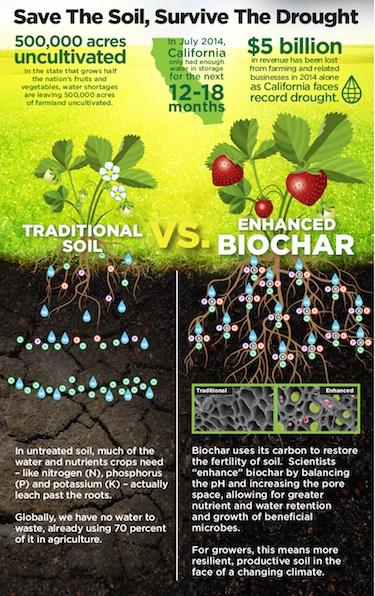

In the past several years, Cool Planet has rocketed from inception to the pilot stage to producing commercially available biochar, a product that could have a significant impact on California’s severe drought conditions. Farmers that use Cool Planet’s biochar can use up to 40 percent less water on the same crop surface area and maintain the same yield, or use the same amount of water and harvest a significantly bigger yield.
The enhanced biochar (the commercial name is CoolTerra) is created from biomass, which can include agricultural waste but the preferred source is wood chips, Cool Planet’s Commercial Director, Neil Wahlgren, explains. Living trees absorb carbon from the atmosphere, but when the tree dies, the carbon is released back into the air. Cool Planet’s biochar process uses locally sourced biomass (within 30-50 miles of each plant, reducing transportation) and captures the carbon, keeping it permanently in the soil so it is not released back into the atmosphere. This helps reduce the total amount of greenhouse gases.
Cool Planet has also figured out how to adjust the pH level of the end product, from a level of 8.5 to 9 (which is too alkaline) to 6.5 to 7, which increases water and nutrient retention. Even if raw biochar were put into the soil without adjustments, the soil would eventually reduce the pH on its own, but it would take 3 to 5 years, and the biochar would not be as effective during this time. Cool Planet has refined this process to take 12 minutes, so the resulting biochar is like “move-in ready condos for water and nutrients,” says Wahlgren.
After a stringent rinsing and quality control process, the biochar achieves the CoolTerra name. The enhanced biochar is certified organic and can be blended with compost for good results. Customers can apply it once to their soil and reap its benefits, but if it is applied every few years, the effects are cumulative.
“Biochar is applied on a case-by-case basis,” Wahlgren says. “It will stay intact in soil for years, if not decades.”
Customers can design their own application process depending on what they need. Some customers will use the enhanced biochar to enrich one parcel of land so that they use less water, some will use it to enrich more land than they were previously able to cultivate because they can distribute the water over a larger area. Some will enrich a parcel of land, use the same amount of water and increase their yield. The biochar also enables customers to use less fertilizer, which reduces the amount of fertilizer runoff into stormwater. Fertilizer in stormwater can make its way into the ocean, causing algae blooms. Wahlgren recounted field test results that showed a 61 percent increase in radish and lettuce yield and 56 percent increase in strawberry yield when grown with 40 percent less nitrogen fertilizer.
Along with good results in the ground fruits market, enhanced biochar also has a big impact on permanent crops like vineyards and the tree market (orchards).
“Every year, 3 to 5 percent of trees end up dying due to a poor soil patch. When they are replanted, biochar helps lock up excess salt or heavy metals and protects plants, increasing the health and growth of those plants,” Wahlgren says.
In addition to the agriculture market, biochar can also be used to reduce water use in landscaping. Thousand Oaks, a town in California, piloted CoolTerra in front of their city hall beginning in August 2014. A 6,000 square foot area of grass has flourished with 50 percent less water. It is a visible demonstration of what CoolTerra can do.
Cool Planet is backed by such companies as BP, Google Ventures, Energy Technology Ventures (GE, ConocoPhillips, NRG Energy), and the Constellation division of Exelon.
“We have strong backers that are reputable players that have vetted the product,” Wahlgren says. “That carries a lot of weight.”
In October 2014, Cool Planet opened a plant in California with a capacity of producing 60,000 cubic yards annually, and already, Wahlgren says, demand is overtaking supply. Cool Planet itself is growing as fast as the crops its biochar benefits. The CoolTerra team has grown from 2 people in 2012, to 16 people currently.
Cool Planet has customers in Canada, UAE and Florida, but most of its customers are in California, where its operations are based. This puts the company in the right place to combat drought conditions in a state in its fourth year of record temperatures and water scarcity.
Cool Planet is working on consumer awareness, and has even ventured into the retail market. California consumers can now buy a 10-quart box, so homeowners can reduce their water consumption and still have their gardens. Currently 20 stores are carrying the product and the company is looking to expand, with 30 to 50 lb. bags available by mid-spring 2015.
In a year, perhaps CoolTerra will be available in retail outlets across the country. For now, it will be interesting to see how much they can aid efforts to conserve water and improve crop yields through commercial and residential use in California.
image credit: Lou Gold, Flickr creative commons license.
Salmon Skin Accessories a Clutch Above Conventional Leather


Salmon skin: it’s not just for sushi anymore.
Ever wonder what happens to that skin that was once part of your lox, dinner or the fishy pate in a tube that you were brave enough to buy while passing by the food market in Ikea? Well, it turns out that it usually just discarded after salmon is harvested.
But two fashion designers, Heidi Carneau and Adèle Taylor, have decided salmon skin is a beautiful and resilient material for their fashion accessories. With years of designing leather goods under their belts, the two long-time friends have joined forces and now design handbags and wallets using more sustainable options than conventional leather, including the skins of salmon and eel. Together they launched their own designer line, Heidi & Adèle.
The duo’s first use of salmon leather started with card holders; recently they have begun to craft larger items such as clutches. While Heidi & Adèle still uses some conventionally sourced leather, more of the company's designs are including what was once just considered a waste by-product of the fishing industry. According to the marketing and design site PSFK, the company buys salmon skin from Iceland. Eel skin, another material found in many of Heidi & Adèle’s designs, is sourced from a farm in Korea.
So why use the skins of fish? Conventional leather, also a by-product of the meatpacking industry, has long been criticized for its social and environmental footprints. Opinions on leather’s environmental footprint (and its fake alternatives, including “pleather”) are all over the map. The tanning of leather has a massive environmental footprint, especially in countries where environmental regulations are more lax. Wastewater, air pollution and toxins from chemicals used in the leather tanning and dyeing process are all downsides of the industry. On the other hand, advocates for fish leather tout its flexibility, durability and how quickly it takes to dyes compared to other types of leather. And what was often dumped back into the ocean or landfill is now scoring a second use.
The finish and texture of salmon skin also offer a more exotic touch—without the dubious practice of hunting what are often threatened or endangered species such as crocodiles and pythons. Heidi & Adèle has pledged never to use hides from endangered species in their designs.
The company sells directly on its own web site; some of their designs are also available on Etsy.
Based in Fresno, California, Leon Kaye is a business writer and strategic communications specialist. He has also been featured in The Guardian, Clean Technica, Sustainable Brands, Earth911, Inhabitat, Architect Magazine and Wired.com. When he has time, he shares his thoughts on his own site, GreenGoPost.com. Follow him on Twitter and Instagram.
Image credit: Heidi & Adèle
Farm-to-Table Greets Visitors at 1620s Jesuit Monastery


Our family ecotourism adventure in continues on the outskirts of Ibarra in Northern Ecuador to what was the northern end of the Inca Empire when the Spaniards first arrived. We stayed in the historic Hacienda Chorlavi, a country inn which was previously a Jesuit Monastery. Founded in 1620, the oldest building was constructed in a European style by local tradesmen that used adobe and wood. Today the inn brings fourth centuries of history, in an artful manner. Cobblestone paths lead to thick-walled guest rooms with decorative touches throughout.
After acquiring the property, the Tobar family used it for agricultural production for a few generations before José and Pilar Tobar transformed their home into a country inn in 1973. The barn transformed into a conference room and the laborer's quarters became guest rooms. In the last forty years, other Ecuadorian haciendas have followed suit, making this once innovative transformative idea much more widespread.
All the rooms in the inn possess a colonial-era feel, with antique furniture, and some containing a wood-paneled ceiling, fireplace, and wood flooring.
From a social responsibility standpoint, Hacienda Chorlavi stands out.
The restaurant offers farm-to-table foods, using fruits and vegetables grown in the property. The grounds are dotted with fruit and avocado trees alongside colorful flowerbeds, all grown using organic methods. The gardener explained to me that they use garlic, hot pepper, and tobacco for natural pest management, and composted food scraps from the restaurant for fertilizer. The warm climate allows food to be cultivated throughout the year.
There are several recycling bins dispersed around the property, including a compost bucket. These were the first recycling bins I saw in use during our four weeks in Ecuador. The hacienda also donates a dollar per guest room to a local child's aid organization.
Hacienda Chorlavi even has a sustainability policy on its website (click here to read to read the full version):
"We believe in sustainable tourism based on the needs of our guests while respecting and enhancing the ecological, economic and socio-cultural aspects of the local population. We implement best practices in all areas of the hacienda, thus minimizing any impact to the environment, our employees and surrounding communities."
Now the next generation, children Carolina and Andres Tobar, have given the inn a makeover, while maintaining a sense of tradition. It is difficult for my American mind to grasp the depth of a family's relationship with a place that spans generations, as my family hasn't even lived in the same continent for the last three generations. During the makeover, Carolina and Andres ensured that there is wi-fi access in the most distant corners of the property and were the vision behind the homegrown produce at the inn's restaurant and the recycling program.
They have large shoes to fill, as the José and Pilar Tobar have a reputation for living by their values and contributing to the community. José was mayor of Ibarra and a highly respected business man. It is inspiring to see Hacienda Chorlavi maintain its charm, while keeping up with the times. This approach is what allows businesses to thrive not just for decades, but for generations.
Still Doubting That Organics are the Future?


By Tim Sparke
The words ‘organic’ and ‘sustainability’ are bandied around quite a bit. While some won’t eat anything but organic, others deny that there’s any future in organic farming. After all, with a population that’s seven billion-strong and growing, how can we possibly expect organics to feed the world? Or so the critics ask. In their view, feeding the masses simply can’t be done without strong chemicals and genetic modification.
However, organic farming has far more capacity than many people imagine. It goes way, way beyond growing a few tomato plants on your back verandah. Besides, if we want to live on a clean, healthy planet, going organic is the only way forward – not only for gardeners and farmers, but also for all businesses related to agriculture, from your local café to your nearest supermarket, from your preferred beautician to your favorite clothing boutique. In fact, when you think about just how many industries depend on agriculture, it’s clear that a shift towards sustainable, chemical-free practices is essential.
Worker and consumer health
The first and most pressing argument for organics is human health. Current intensive agricultural practices expose people -- especially farmworkers -- to toxic pesticides. In 2002, a Californian study revealed that, between 1997 and 2000, an average of 475 farmworkers suffered pesticide poisoning annually. As the study suggests, the total figure was probably much higher, given that many cases go unreported each year. What’s more? Increasingly, studies are demonstrating links between pesticides and cancer, as well as disruption of the endocrine system.
Meanwhile, those at the other end of organic farming – consumers – also face health risks. Food grown using intensive techniques can contain pesticide residues, which consumers ingest when they eat. Plus, some studies show that organic products are more nutritious than their conventionally farmed counterparts. For example, a study (PDF) conducted by the (admittedly biased) Organic Center showed that organic food performs much better when it comes to antioxidant power, polyphenol levels and flavonoid levels. And the same goes for animal products. Dairy products from animals raised on organic farms, which haven’t been fed antibiotics, tend to be higher in antioxidants and omega-3.
Environmental health
If we’re serious about keeping our planet healthy, and make it available for future generations, there’s no way that we can continue to support intensive agriculture. When pesticides and other strong chemicals are sprayed on our crops, they end up not only in our soil, but also in our waterways. Over time, this causes our soil to become severely depleted of nutrients, and eventually completely unable to support life. For our waterways, it can mean extreme pollution. Given that we rely on our rivers for our very survival, there’s no question that our future depends on us turning to organic farming.
But can organic farming produce enough food and materials?
Some people believe that organic strategies are only suitable for private or small-scale farming. But numerous studies have illustrated that organic strategies can produce just as much output – if not more – than regular methods. For example, back in 1989, the U.S. National Research Council studied eight organic farms across the United States – from an Ohio-based farm of 400 acres specializing in grain and livestock, to a California-based farm where 1,400 acres of grapes were growing. When compared with nearby farms, where intensive practices were being exercised, the organic farms yielded just as much, if not more, produce on average.
Economics
Finally, one argument often put forward in favor of conventional methods is economics. Supporters of the status quo believe that intensive farming is superior because it means we can produce plenty of food at much cheaper rates than organics can. But this is an exceptionally short-sighted view. For a start, the amount of disease being caused by the chemicals in the environment is already weighing on our health system - and this is only going to become a more and more expensive problem.
Secondly, the more organics are used, the cheaper they'll become. Running an organic farm actually requires less expensive equipment and chemicals than a conventional one does - plus, once organics become more widespread, operating costs will decrease significantly.
The future
So, if we want to assure ourselves of a happy, healthy, safe future, the only way forward is organics. By reducing the number and intensity of toxic chemicals in our world, we can look forward to living in a planet where disease is reduced and our environment stays pristine for generations to come.
Tim Sparke is the CEO at 4pumps and for several years, he has been an active advocate of organic farming and sustainability. He also has a passion for writing and he writes the blog at 4pumps.
Image credit: Pixa Bay
TJ Maxx Follows Walmart’s Lead, Promises to Boost Wages
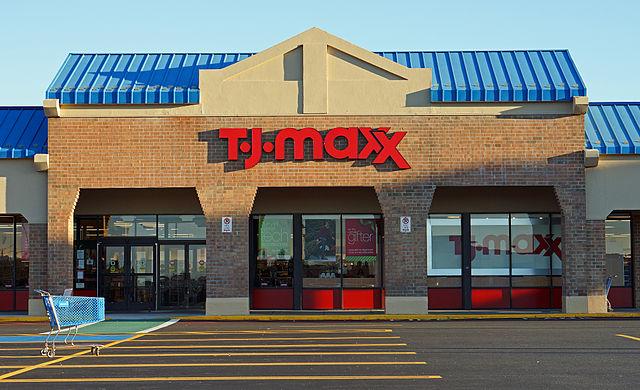

Is retail finally starting to become more humane in the United States? It is not anywhere close to becoming a job that can lead to a decent middle class -- or even a lower-middle class -- lifestyle, but wages are starting to inch up.
Walmart started the ball rolling with its announcement last week that it will increase wages to $9 an hour. Now TJX Companies, the operators of TJ Maxx and Marshall’s, is the latest nationwide retailer to announce it will also give many of its workers a raise.
In a press release discussing its recent financial performance, the company announced it will raise the minimum wage for its employees to $9 an hour starting in June. That is a slight uptick from current wages, which now range from $8.25 to $8.50 an hour. By 2016, all employees who have six months’ tenure with the company will make a wage of at least $10 an hour.
So, why is the stubborn retail sector slowly changing its ways?
Part of the reason is simple economics. The labor market is actually tightening, with the U.S. jobless rate at a six-year low of 5.6 percent. Retail workers often struggle because even though most work only part-time, it is difficult to land a second job if your work schedule is all over the map. Even if an employee is working only 20 hours a week, that extra $80 or so a month (before taxes, of course) is nothing to sniff at. Workers will jump ship in a heartbeat, and as Costco has long proven, reducing employee turnover by keeping your workforce happy and loyal is a great way to keep costs down. And TJ Maxx’s executives seem to get it.
“At TJX, we attribute our success over the last 38 years primarily to the people we have hired who have remained focused on our mission of delivering consumers amazing values,” said TJX Companies CEO Carol Meyrowitz. “This pay initiative is an important part of our strategies to continue attracting and retaining the best talent in order to deliver a great shopping experience for our customers, remain competitive on wages in our U.S. markets, and stay focused on our value mission.” Happier employees mean customers will open their wallets even more.
Furthermore, as more consumers become more conscious about the stores from which they buy, low wages will continue to fester as a black eye within the retail sector. The employee strikes against Walmart were a constant public relations embarrassment, no matter what kind of spin the company tried to apply to its workers’ grievances.
Furthermore, despite the economic theories that are repeated to us many times over, higher wages can overall boost macroeconomic performance. After all, workers at all pay levels tend to do the same thing with their raises: They spend them. Take a look at Minnesota, for example: Despite a higher minimum wage and other economic policies that conventional wisdom dictates would kill an economy, the Gopher State currently has one of the best performing economies in the U.S. There are always exceptions, but a rising tide such as what is going on in retail can help lift more boats.
Image credit: Anthony92931
Based in California, Leon Kaye is a business writer and strategic communications specialist. He has also been featured in The Guardian, Clean Technica, Sustainable Brands, Earth911, Inhabitat, Architect Magazine and Wired.com. When he has time, he shares his thoughts on his own site, GreenGoPost.com. Follow him on Twitter and Instagram.
Shell Backs Out of Alberta Oil Sands Project
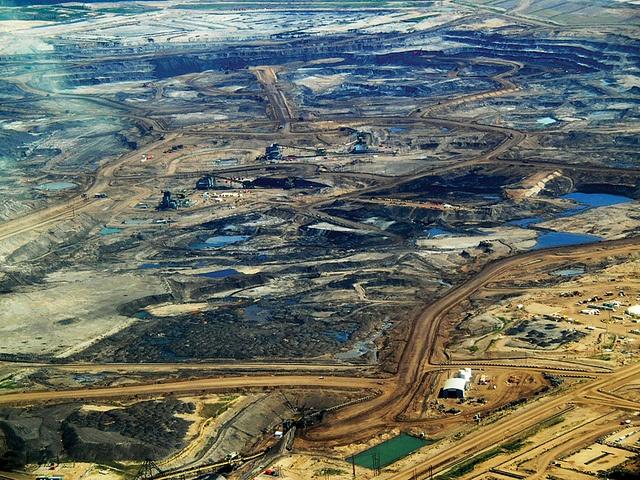

Royal Dutch Shell's recent announcement may speak volumes for the future of the Alberta tar sands -- at least for now. On Monday, the oil company announced that it was pulling the plug on its massive 200,000-barrel Pierre River mine project, which also happens to be the largest of its kind in the Alberta oil sands.
Pierre River isn't the only oil sands project the company operates, however. It also runs the Muskeg River mine and the Jackpine mine, which together account for 17 percent of Canada's oil production. The Athabasca oil sands project, which contains these mines, is a joint development between Shell, Chevron and Marathon Oil.
On Monday, Shell Canada President Lorraine Mitchelmore downplayed the significance of the decision. "The Pierre River Mine (PRM) remains a very long term opportunity for us, but it’s not currently a priority.” Mitchelmore also serves as a vice president of heavy oil for the company. "Our current focus is on making our heavy oil business as economically and environmentally competitive as possible. We will continue to hold the leases and can reapply in the future when the time is right."
Analysts have drawn significance from the timing of the announcement, which came the day before President Barack Obama vetoed the controversial Keystone XL bill. The president warned that he would veto any Congressional bill that moved the pipeline project forward before environmental impact studies were completed. The pipeline, a permanent conduit for oil produced in the Athabasca, would cross states that serve as the U.S. breadbasket for food production and skirt the eastern edge of the Ogallala aquifer, a water source for 2 million residents of eight states.
But Shell's pullout also comes at a time when the company is under increasing environmental scrutiny. In January, the Dutch company agreed to pay $83.4 million to residents in Niger Delta for two 2008 oil spills that devastated the town of Bodo, Nigeria. It is the largest oil spill payout in Nigeria's history. The settlement follows years of negotiations and will cost Shell considerably more than the $6,000 payment it initially offered the town of 15,000 residents.
It also follows Shell's decision to cut 300 workers from its oil sands bitumen projects, a reflection of plummeting oil revenues at the pump.
"It’s no secret the oil sands industry has been facing challenges for some time," Simone Marler, who serves as a spokeperson for the Shell Albian oil sands project, told Fort McMurray Today last month. "Recent oil prices have added to that pressure. We’ve been making tough choices along the way."
According to Shell, however, "Employment impacts [of the withdrawal from Pierre River] will be very limited."
This isn't the first time that the company halted the Pierre River project. In February 2014 it put a hold on the project, saying it needed to reassess its direction. Although Pierre River was approved by the Canadian Environmental Assessment Agency as being in the public interest (a necessary green flag for this project), the company faced an uphill battle with both environmentalists and the government. At the same time, it was under challenge by Metis and First Nation communities, who said they would be affected by the company's attempt to mine out 21 kilometers (14 miles) of the Muskeg River.
In January of this year, the federal government rejected a First Nation band claim that it didn't have adequate consultation in the proposed expansion of the Jackpine mining development. We'll be waiting to see whether Shell's hopes for expansion of these projects increase now that its Pierre River endeavor is out of the way.
Image credit: Howl Arts Collective
Jordan’s 6,000 Mosques to Be Powered by Solar Energy

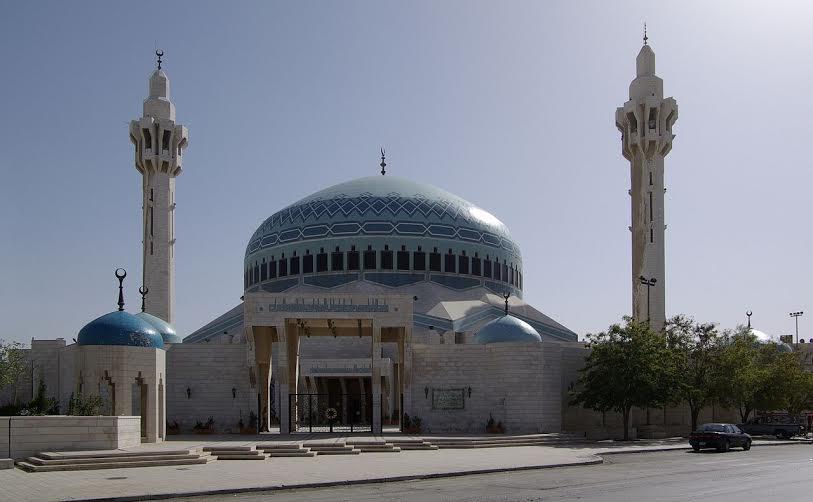
The Middle East may be mineral-rich, but that does not mean oil and gas are distributed evenly across the Gulf and Levant. Jordan, for example, has to import more than 95 percent of its energy needs. The result is an economy that spends as much as 16 percent on energy, or more than 40 percent of the nation’s budget.
The capital, Amman, has a budding entrepreneurial spirit, and the nation is culturally and geographically rich from Petra to the Dead Sea. But tourism is hardly enough to sustain an economy for 6.5 million people — a number on the rise because of the Syrian refugee crisis and continued chaos in nations from Egypt to Iraq. Jordan has numerous other challenges, but it is rich in one resource: sunshine. Now the kingdom is accelerating the adoption of solar, starting with the country’s 6,000 mosques.
According to Amman’s English daily, the Jordan Times, government agencies are working together to install solar panels at mosques, financed by a combination of grants and contributions through zakat (one of the five pillars of Islam that requires charitable donations). The projects will start with tenders to retrofit 120 mosques with solar and then the program will expand across the nation.
Another pillar of Islam, prayer, is what keeps most mosques in Jordan and the Islamic world open from before sunrise to well after sundown. The Jordanian government spends over US$70 million on its mosques annually, including current upkeep, salaries and the construction of about 150 new mosques a year. Reducing the amount spent on electricity could free up funds for other zakat social programs, and could even allow mosques to raise their own funds thanks to a 2012 net metering law that allows those operating solar installations to sell excess energy back to the national grid. One mosque in Amman has already installed solar, and it went from having utility bills totaling $1,400 a month to being able to sell electricity back to the local power authority for US$0.18 a kilowatt hour.
The drive to switch mosques from conventional power to solar is part of the Jordanian government’s push to add more renewables to the country’s energy mix. The country has set a goal to score 10 percent of its energy needs from renewables by 2020 and expects 1,800 megawatts to be linked to its national power grid by 2018. One of the clean energy projects is a 117 megawatt wind farm in Tafila, which includes Abu Dhabi’s Masdar as one of its investors.
Installing solar panels on the country’s mosques is one step in freeing Jordan from the need to import energy — which has come with a financial and environmental price, especially after the repeated sabotage of the Arab Gas Pipeline from Egypt since 2011. That disruption in the country’s natural gas supply forced it to switch to dirty diesel generators, many of which are still in operation. But scaling up solar also can create job opportunities — much needed in a country with the unemployment rate hovering around 13 percent, and even higher among Jordan’s youth.
Image credit: Berthold Werner
Based in California, Leon Kaye is a business writer and strategic communications specialist. He has also been featured in The Guardian, Clean Technica, Sustainable Brands, Earth911, Inhabitat, Architect Magazine and Wired.com. When he has time, he shares his thoughts on his own site, GreenGoPost.com. Follow him on Twitter and Instagram.
Dietary Guidelines Consider Planet's Health


“Eat food. Not too much. Mostly plants.” These seven words are author and sustainable food advocate Michael Pollan’s sage advice on how to eat a diet that is healthy for both people and the planet. And now it appears the U.S. government is poised to adopt similar nutritional recommendations.
Last week, the nation’s top nutrition panel, the Dietary Guidelines Advisory Committee, released its latest report -- which argued for a “sustainable diet” high in plant-based foods and lower in calories and animal-based foods. The findings, which serve to provide the scientific basis for the next version of the federal government’s Dietary Guidelines (think the old food pyramid and now, MyPlate), urge Americans to consider the environmental impacts of their diets, saying that food that is more environmentally responsible is usually healthier for people.
This is the first time the advisory committee has incorporated the environmental impact of food production and consumption in its report, which is published every five years.
Just as Pollan suggests, the Dietary Guidelines Advisory Committee recommends favoring plants and plant-based foods in your diet – vegetables, fruits, whole grains, legumes, nuts and seeds – and cutting back on red and processed meats. This type of diet, the panel says, has been linked to a lower risk of cardiovascular disease and uses fewer resources and produces fewer carbon emissions than the standard meat-heavy American diet.
While the committee is careful to point out that no one food group needs to be completely eliminated from the American diet, the beef industry still felt singled out by the new dietary recommendations, saying the group ignores “a large body of strong and consistent evidence supporting lean beef’s role in healthy diets.”
Back in December, Congress approved language expressing “concern” that the committee was “considering issues outside of the nutritional focus of the panel” – namely, the environmental impact of food, the Washington Post reported.
But even though the report aims to evaluate the environmental footprint of our diet, the committee suggests Americans eat more seafood to support healthy heart and brain function. How exactly is arguing for the increased consumption of this dwindling resource sustainable? The report says that additional sustainable aquaculture will be instrumental to meeting the growing demand for seafood; but whether you are in favor of more fish farms or sustainable capture fisheries (wild-caught fish) – or a combination of both – the fishing industry has a long way to go before Americans can begin to serve more fish at mealtime.
Regardless of the panel’s somewhat questionable advice on seafood consumption, incorporating sustainability into the national nutrition advice is significant: The government’s Dietary Guidelines influence the development of school lunch menus and national food labels. It will be interesting to see if the Department of Health and Human Services and the Agriculture Department choose to ignore the panel’s more controversial recommendations, but instances of this are uncommon, former panel members told the Washington Post.
The environmental impacts of food has been part of nutrition policy for the past decade in many other countries, the report says, including Germany, Sweden, the Netherlands, Australia and Brazil. And, the study says, environmentally responsible food will ultimately protect our food supply in the long run.
“Access to sufficient, nutritious and safe food is an essential element of food security for the U.S. population,” the report says. “A sustainable diet ensures this access for both the current population and future generations.”
Image credit: Flickr/Martin Cathrae
Passionate about both writing and sustainability, Alexis Petru is freelance journalist and communications consultant based in the San Francisco Bay Area whose work has appeared on Earth911, Huffington Post and Patch.com. Prior to working as a writer, she coordinated environmental programs for Bay Area cities and counties. Connect with Alexis on Twitter at @alexispetru
KFC and Seattle's Best Present the Edible Coffee Cup


What do you think about when you dig into a bucket of fried chicken? Potatoes and gravy? A fresh salad? A tall soft drink?
Well, in the U.K., apparently it's fresh-cut grass and the aroma of coconut sun screen -- oh, and fresh brewed coffee.
This interesting factoid is the basis for a new edible coffee cup that KFC and Seattle's Best Coffee have pioneered and are due to release at KFC outlets. The Scoff-ee cup, which is made of cookie and lined with chocolate, is designed to be eaten. The new concept is due to be released soon when KFC starts offering the Seattle's Best brand.
This type of yummy packaging is often seen with ice cream and yogurt products, but this is a first for patented coffee drinks -- certainly given the choice of aromas, which also include spring flowers.
“Not only do the edible cups taste amazing, but they smell delicious too," says Brandy Wright of the Robin Collective, the food-pioneering company that helped devise the new coffee cup.
And a glance at the KFC's U.K. site suggests the company is probably bang on when it comes to tantalizing its customers with enticing deserts. From malt drinks to decadent sundaes, the U.K. outlets clearly have their finger on their customers' sweet addictions.
Still, it's an interesting, if not provocative, choice in a country that is at the top of the list when it comes to obesity in the EU, and with 6 percent of U.K. residents suffering from diabetes, has created its own notable statistic when it comes to insulin-related diseases.
The government has been battling for years to reign in weight problems in U.K. Some 67 percent of men and 57 percent of women are obese or overweight. Those numbers even top the U.S., where 1 in 3 adults are considered obese.
But admittedly, KFC doesn't seem to be suffering from the call for Brits to lose weight -- or to cut back sugar consumption, and it doesn't seem to be worried about the correlation that has often been made between access to fast food and the prevalence of obesity. In April 2014, KFC announced that it plans to open another 150 stores across the U.K. and Ireland. That five-year expansion is expected to bring another 6,500 jobs to cities across the U.K. and Ireland, where deep-fried chicken dinners seem to be doing better than they are in the U.S.
KFC hasn't announced any definite plans for launching the Scoff-ee in North America, but if it takes off, chances are we'll see it on this side of the pond sometime soon.
Image credit: Terry Whalebone
Water Reflections: A Traveler Stumbles Upon Dry Land

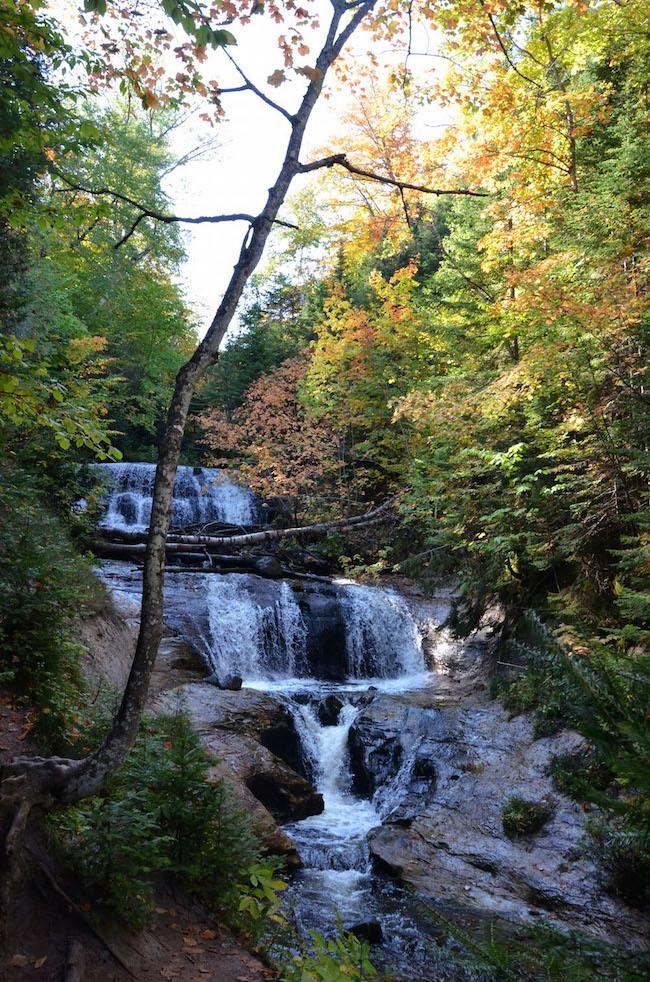
By Jeremy Orr
As a native Michigander, I grew up around one of the largest freshwater systems in the world, the Great Lakes -- not to mention the countless inland lakes, ponds, rivers and streams that were carved into Michigan’s landscape by retreating glaciers thousands of years ago. Surrounded by so much fresh water, the words “drought," “water famine” and “water scarcity” didn’t seem too imminent a threat to me, as I usually applied them to arid landscapes in the western United States or deserts elsewhere in the world. In fact, they were so foreign to me, they may as well have been alien species from a distant planet.
It wasn’t until I started traveling for work that I realized how scarce water could be. When I first worked overseas, I spent a great amount of time in the Middle East, staying for brief periods in various places in the Persian Gulf. It didn’t take long to notice a common denominator in all the places I visited in the region: a lack of fresh water. It’s not that I wasn’t aware that these countries weren’t giant freshwater swimming pools like states in the Upper Midwest; I was just ill-prepared for such a dearth of water, period.
The region’s parched landscape had me thinking of both water scarcity and access to potable water worldwide. Aside from the obvious, what were the implications of a lack of fresh water in the region, and elsewhere? Does a shortage of potable water in a region as large as the Middle East affect the world’s water supply, and if so, how? What role does climate change play in all of this? Of course, these questions, among others, were not easy to answer.
According to the U.N. Department of Economic and Social Affairs (UNDESA), nearly one-fifth of the world’s population live in regions of physical water scarcity -- that’s an estimated 1.2 billion people worldwide! To complicate matters, another 1.6 billion people are threatened with water shortages due to a lack of infrastructure and the financial means to secure potable water.
And don’t be fooled -- these statistics are not just relegated to some faraway place. Arizona’s Lake Mead has the potential to be “dry” in the coming decade, yet it provides potable water to some 22 million people. That’s 22 million people in the southwestern United States alone who are currently threatened with a loss of their water source. In light of looming 2050 global trends -- a rapidly increasing population in particular -- it’s not hard to imagine that water-related issues will only worsen worldwide, producing deleterious effects on an already strained resource.
Indeed, the effects of water scarcity are wide and varied. A decrease in a region’s water abundance can lead to damaged ecosystems and a changing landscape, and it can also negatively impact food production. It can affect the financial security of a region, as businesses and communities rely on water to remain economically competitive. Water scarcity and a lack of clean, potable water, can even impact national security, as water-related issues can result in regional instability and affect national interests abroad.
Although it is paramount we act now to secure a stable water supply for the world’s current and future population, this isn’t necessarily a doomsday scenario. The Executive Master of Natural Resources (XMNR) program at Virginia Tech’s Center for Leadership in Global Sustainability (CLiGS), teaches that today’s water challenges -- and other natural resource challenges, for that matter -- are not intractable. Through trans-boundary management of resources, sustainability professionals and policymakers alike can forge a path toward sustainable development.
Partnerships between the public, private, and nonprofit sectors can be formed to create innovative solutions to environmental challenges, while also contributing to economic growth. For instance, during the summer module of the XMNR program, my team applied collective impact management in the Chesapeake Bay Watershed to promote a powerful, collaborative approach to solving the watershed’s water quality issues.
By collaborating with the Virginia Environmental Endowment (VEE), we studied two successful collective impact models in the watershed (Envision the James and the Elizabeth River Project’s Learning Barge), providing an educational tool on VEE’s website for other organizations interested in learning about this multi-sector approach. Another team brought together key stakeholders in Loudoun County, Virginia, to promote a collaborative approach to protecting the quality and quantity of the region’s water supply through sustainable development in the Potomac Watershed.
Now, whether traveling in the U.S. or elsewhere, I am no longer struck by a sense of helplessness when I find myself in a place that appears devoid of water. I no longer feel as if someone has pulled the plug on the drain that holds the world’s supply of fresh, potable water. Despite the challenges we face regarding the gamut of water-related issues, the XMNR program helped me realize that, although the world’s water issues may appear insurmountable, they are not. Where I once saw irreversible plight, I now see opportunity for collaborative, creative solutions. These solutions are limited only by the imagination, and they will no doubt provide a stable and secure water supply now and into the future.
To learn more about how CLiGS is involved in tackling sustainability challenges, including their partnerships to address water security issues, please see CLiGS Topics.
Jeremy Orr is an alumnus of Virginia Tech’s Executive Master of Natural Resources (XMNR), graduating in 2014. He is currently the Agricultural Outreach Coordinator for two nonprofits, and is an affiliate of the Environmental Management and Business Institute at the University of Wisconsin-Green Bay. He is a veteran of the United States Navy.